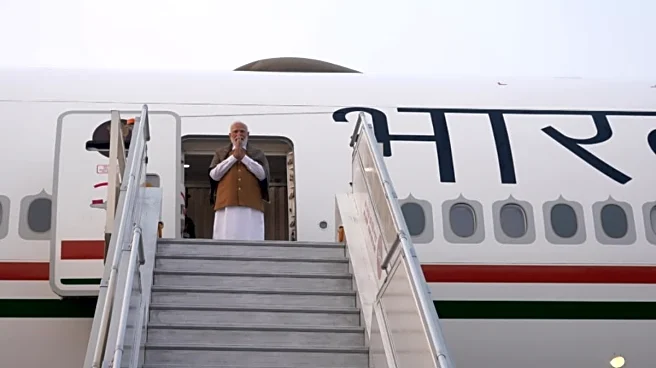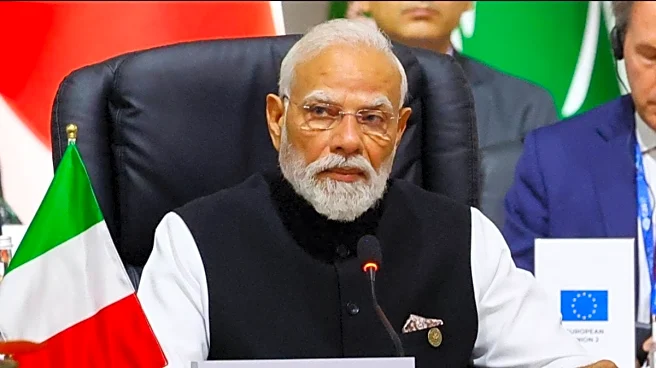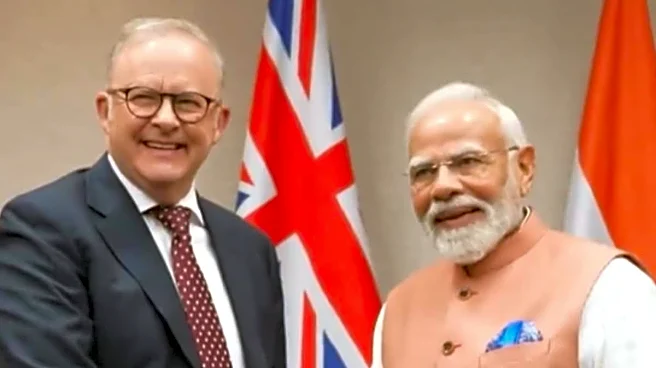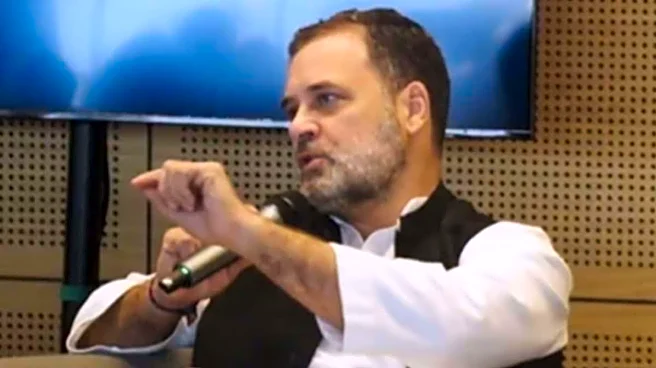The G20 summit in Johannesburg takes place amid an environment of rising economic fragility, widening inequality, and deepening pessimism about the capacity of global institutions to deliver meaningful
results. A growing share of the world’s population now lives in countries grappling with the combined pressures of mounting debt and tightening financial conditions. Climate change is accelerating faster than the collective response, and adaptation costs rise sharply each year. Digital technologies and Artificial Intelligence are reshaping power dynamics in ways many governments find hard to influence. These forces converge on a single question that now defines international cooperation: can the system still respond with impact, or has it slipped into a cycle of rhetorical ambition and operational decline?
This year’s meeting is especially significant because the G20 continues to absorb the political shift introduced during India’s chairmanship. Under Prime Minister Narendra Modi, the forum adopted a stronger emphasis on the priorities of the Global South and elevated the African Union to permanent membership. That adjustment was more than symbolic. It reflected the changing geography of global growth, energy demand, digital innovation, and demographic expansion. Johannesburg now stands as the place where political alignment must be translated into mechanisms capable of addressing concrete challenges. India’s long-term legacy, and the G20’s credibility as a platform for collective action, will be judged against this operational benchmark.
The most immediate challenge is the expanding sovereign debt crisis. More than sixty low and middle-income countries devote more public resources to debt servicing than to essential sectors such as healthcare. This pattern reflects global interest rate cycles, fragmented financing, limited access to concessional credit, and a lack of effective shock absorbers across the international system. The G20’s Common Framework was introduced to manage these pressures, yet it has struggled to gain broad participation because of its uncertain timelines, complex negotiations, and uneven creditor incentives. Governments often face prolonged periods of uncertainty, which compounds the economic damage caused by the initial debt distress.
A more coherent strategy is now essential. A dedicated reprofiling window that sets clear parameters for extending maturities would give vulnerable countries immediate fiscal space while preserving access to capital markets. Greater use of Special Drawing Rights would help refinance expensive debt, reduce fiscal strain, and stabilise development spending. African-led initiatives such as the African Financial Stability Mechanism and the African Debt Monitoring Mechanism can strengthen transparency, improve risk assessment, and reduce the information asymmetries that contribute to higher borrowing costs. G20 support for these mechanisms would signal respect for African leadership and a realistic understanding of the structural nature of the continent’s financing challenges.
Climate finance stands as the second area demanding systemic reform. Investment needs for mitigation, adaptation, and resilience in developing economies now reach into the trillions, while current financial flows fall far short of this threshold. Delays in scaling climate finance produce cumulative economic losses, disrupt transition pathways, and heighten political frustration in regions facing the most severe climate impacts. India’s own estimated requirement of more than two trillion dollars by 2030 illustrates the magnitude of the shortfall.
Multilateral Development Banks remain the primary channels through which the G20 can influence global climate finance. Their ability to mobilise capital depends on the structure of their balance sheets, the flexibility of risk-management frameworks, and the willingness of shareholders to expand mandates and provide additional resources. Recent attention to balance sheet optimisation marks a meaningful step, increasing lending headroom through improved recognition of callable capital, the use of portfolio guarantees, and technical adjustments to risk parameters. Even so, the expected rise in annual lending remains far below what a credible climate response requires. More ambitious tools—stronger guarantee platforms, expanded hybrid capital, and sustained political support for capital increases—will be needed.
We must understand the debates over the re-channeling of SDRs within this context. Reserve assets remain one of the few instruments with the ability to expand climate and development finance at scale without imposing excessive fiscal burdens on donor governments. Legal and institutional barriers have slowed progress, but targeted reforms can protect central bank mandates while enabling MDBs to deploy SDR-backed instruments effectively. Emerging economies will have stranded assets, rising adaptation costs, and a widening economic gap in the future if they don’t get more long-term financing.
A third frontier—digital infrastructure and AI governance—now intersects with both financial and climate challenges, shaping development pathways for decades to come. The architecture of digital systems affects everything, from service delivery and financial inclusion to data security and national resilience. India’s introduction of Digital Public Infrastructure to the G20 agenda reflects a shift toward models grounded in open standards, interoperability, and federated data governance. These principles allow countries to build digital ecosystems without ceding control to external platforms or creating centralised data repositories that are vulnerable to misuse.
Johannesburg offers an opportunity to embed these principles across development finance. MDB-supported digital projects can be aligned with governance frameworks that protect autonomy, strengthen transparency, and support innovation. The AI discussion reinforces the importance of these safeguards. Algorithms now influence credit allocation, hiring, healthcare recommendations, and public administration. Without clear rules, these systems risk amplifying structural biases and widening inequality. South Africa’s focus on fairness, accountability, and inclusion reflects the concerns of many developing economies that see AI governance as a matter of economic and social equity.
All of these debates point toward the same conclusion: multilateral institutions must demonstrate that they can respond to the scale of current challenges. India’s presidency reshaped expectations by centering Global South perspectives within the G20’s core agenda. The African Union’s full membership marks a step toward a more representative global order. Johannesburg has become the venue where these expectations must be met through concrete actions and operational commitments.
The implications extend well beyond the reputations of individual leaders. They speak to the future of multilateralism in a period defined by geopolitical tension and economic divergence. The G20 remains one of the few platforms with the capacity to coordinate responses and stabilise the global system. Realising that potential requires a shift from broad declarations to measurable outcomes. Debt relief frameworks must reduce uncertainty. Climate finance must scale in line with scientific evidence. Digital governance must advance autonomy rather than create new dependencies.
PM Modi positioned India as a connector between established and emerging economies, guided by demographic weight, digital capabilities, and strategic relevance. Johannesburg will indicate whether the political capital accumulated during India’s presidency can be translated into lasting institutional gains. It will test whether the G20 can return to a sharper focus on implementation and whether the Global South’s collective priorities can shape the tools that structure global finance, technology, and climate action.
The outcome will influence the trajectory of international cooperation for years to come. A system that delivers will strengthen trust and support shared prosperity. A system that hesitates will deepen fragmentation and weaken global resilience. In this sense, Johannesburg is not only a test of leadership. It is a test of the multilateral order itself.
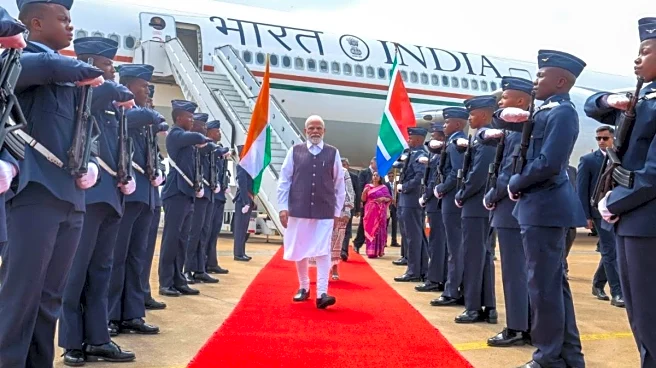

/images/ppid_a911dc6a-image-176365542958663119.webp)

